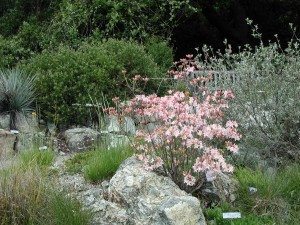A bird sit
By Phila Rogers
And just what is a bird sit? I think of it as sitting quietly and listening intently to bird sounds. Are you hearing a song declaring territory? Or is it a call, or series of calls, which might be considered conversational? Or is it an aggressive vocal display to defend territory? Perhaps the call is an alarm announcing the approach of a predator. Light calls in the spring might be juvenile birds begging.
Other sounds may include rustling foliage. Can you distinguish the sound of wind in pines or in other trees? And what about scratching sounds in dry leaves made by ground-feeding birds? And then there are the ambient sounds – the collective roar from the cities below, traffic on a nearby roadway, a passing jet.
While listening for sounds, sitting quietly allows you to watch for the slightest movement revealing the presence of bird activity missed when walking along a pathway.
A bird sit allows you to soak up by osmosis the larger scene. What does the air feel like — is it moist or dry? Does it appear to be marine air coming from the ocean, or dry air coming from inland areas? What are the fragrances? Can you sense the mass of the nearby trees, the bulk of the surrounding hills?
If you are sitting near a stream, can you tell by listening if the stream is flowing over pebbles or around boulders? Follow the stream with your mind’s eye from where it begins as springs high on the hill, following it through dark culverts, and where it finally joins the Bay. Are there more birds calling and singing along the stream than elsewhere?

Stepping back into the past, can you imagine an earlier time before the roads and the introduced vegetation? Go back a hundred years to grazing cattle and grassy hills when the song of the meadowlark prevailed.
Or go back 200 years earlier before the arrival of the Europeans, when grizzlies moved up the stream canyons. Imagine the smell of burning grass and scrub from the fires set by the native peoples to clear the land and to promote the growth of tubers and wildflower seed.
Looking out over the Bay, imagine that 10,000 years ago the Bay was once a valley crossed by the great inland river, a time when the coastline was out beyond the Farallon Islands.
Or for a giant leap back in geological time, imagine a time before the Berkeley Hills, when the land was covered by a warm, tropical sea.
—————————
(Note: Some of my ideas are from “Bird Language with Jon Young,” an instructional video by Calen Kennel.
